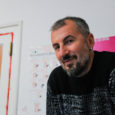The inhabitants of this part of southeastern Serbia ― the municipalities of Bujanovac, Preševo, and Medveđa ― disagree on the name of this small region. Some call it the “Preševo Valley,” others refer to it as “Pčinja District,” a designation that doesn’t encompass Medveđa. However, everyone agrees on one term, “the valley of hunger,” describing an area deeply divided on all grounds, except for economic poverty.
Both Albanians and Serbs, and others who live in the part of Serbia bordering Kosovo and North Macedonia, concur that there’s no future there, while the present depends on the diaspora. That is, on the funds which those who have departed send home to their families and on that which the diaspora spends when they return on yearly vacations home.
The valley’s inhabitants saw the degree to which they rely on the diaspora when the borders closed down due to the pandemic. However, neither the lockdown nor fear of disease was enough to bring together these people who live and starve together.
The division is evident in cafes, in the streets, schools, and the media. The divide is so intense that people aren’t hesitant to say that they live next to each other, but not with each other.
Such a life means that despite being literal neighbors, young Serbs and Albanians have largely given up on speaking each other’s languages; most rely instead on English to communicate across ethnic lines. It’s nearly impossible to find Serbs who speak Albanian, and increasingly rare to find Albanians who speak Serbian, especially among young people who attend separate schools.
What is common to both, however, are dreams. Both groups dream of continuing their lives far away from the valley.
Simultaneously, it’s as if the politicians are ignorant of this.
Promises and plans on paper
Before the visa regime for Serbia was lifted, this country was among the top four in terms of asylum seekers in the EU, right behind Afghanistan, Russia, and Iraq. Mostly, these were people from Serbia’s south, including the municipalities of Preševo, Bujanovac and Medveđa.
According to the rather scarce existing data, fewer than 70,000 people live in this part of Serbia. Most are Albanians, although there is no reliable data on the number of inhabitants nor the population’s ethnic makeup. The last census ― boycotted by Albanians ― was held in 2011. One of the reasons for the boycott lies in the claims of political leaders that the previous census, in 2002, wasn’t reliable and that it didn’t reflect the actual ethnic makeup of the population living there.
Ardita Sinani, the mayor of Preševo, claims that the unemployment rate in this municipality alone reaches around 70%.
As it is not known how many people live in this area, it’s difficult to say how many have left in previous years. Nevertheless, on the streets it is noticeable how few people there are.
On the other hand, the reasons for leaving abound. One of the main things that has been affecting inhabitants of all of the municipalities in this part of Serbia for many years is unemployment, which ― as is the case in the whole country ― has grown during the pandemic. But again, there is no reliable data on the rate of unemployment.
While the government in Belgrade claims that nothing dramatic is happening in the field of unemployment in that part of Serbia, the NGO sector is highly skeptical. Ardita Sinani, the mayor of Preševo, claims that the unemployment rate in this municipality alone reaches around 70%.
For decades, inhabitants of the three municipalities have been hearing promises that the situation would improve. They see how politicians are signing agreement after agreement, plan after plan, but their lives remain unaffected.
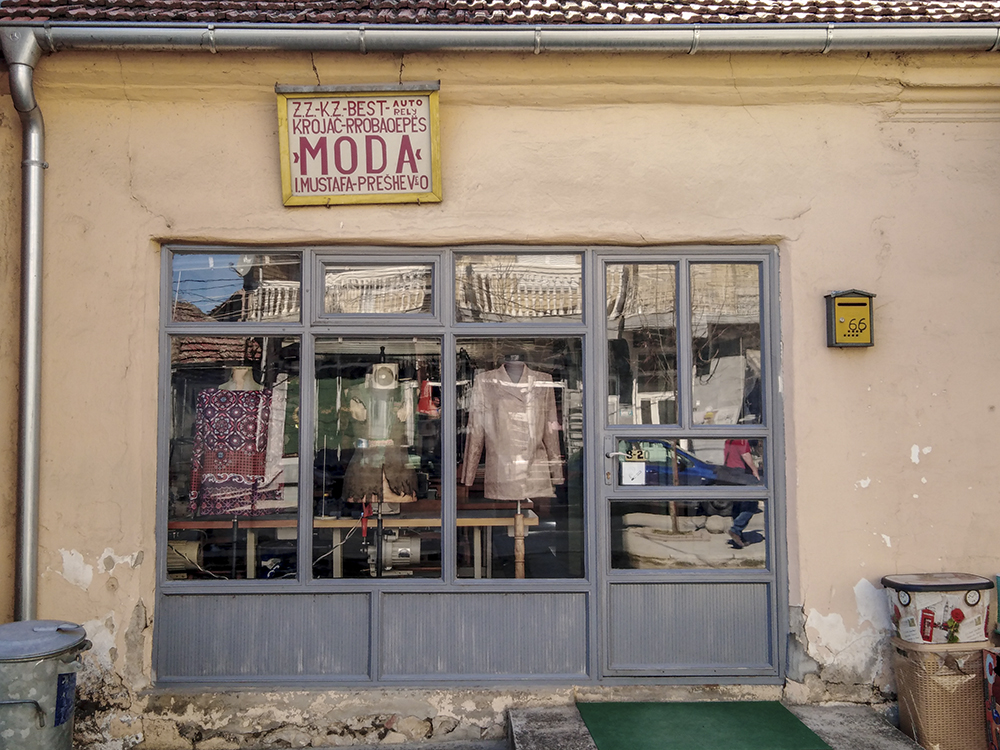
In Preševo it sometimes seems that time has stopped, while the citizens are struggling to keep on moving with their lives. Photo: Dejan Kožul.
In the last 20 years, three agreements were signed. First was in 2000 when the Coordination Body of the Government of Serbia was established for the three municipalities. Their main office is in Belgrade, with offices in Preševo and Bujanovac. As stated on the institution’s website, the basic goal is to work on issues of education, social topics, economic development, and strengthening civil society. The body is active to this day, but it’s difficult to discern all their activities merely based on official sources.
The Končulj Agreement, signed in 2001, was the first agreement related to this part of Serbia. The agreement ended the conflicts that spilled over from Kosovo, with political representatives from the local Albanians, Serbia and Kosovo committing to demilitarization.
During the same year, the “Plan and program for the resolution of the crisis in the municipalities of Bujanovac, Preševo, and Medveđa” was signed. It is also known as “Čović’s Plan,” referring to Nebojša Čović, former deputy prime minister and head of the Coordination Body for Serbia’s south. The plan included a clause on “integrating Albanians.” The deadline for fulfilling the Plan expired in 2004.
Another agreement followed in 2009. Called the “Agreement on the principles for reconstructing the Coordination Body for the municipalities of Preševo, Bujanovac, and Medveđa,” this agreement referenced the former one and was supposed to have created conditions for allowing all communities to “express, preserve, and develop their identities” and to have been a guarantee for “involving the Albanian community in state institutions.”
Again, little was done to implement what was agreed upon, while the conditions mentioned in the agreement have not yet been achieved.
In June 2013, the Government of the Republic of Serbia, led by the Serbian Progressive Party and Aleksandar Vučić, adopted the “Seven Points Plan,” which was largely the same as the previous agreements.
Outside help
Ragmi Mustafa, president of the Albanian National Council (ANC), says that Albanians in the valley had high hopes for the international community’s guarantees for achieving their rights, but he feels that little help has actually come through. Mustafa states that Serbia has no political will to change the situation on the ground in this part of the country ― and that this is reflected in the existing legislation.
“The Government of the Republic of Serbia shows no political will or readiness to integrate Albanians of the Preševo Valley, as well as no serious reform of the constitutional and legal frameworks, which would improve the status of minorities in Serbia, especially that of Albanians,” Mustafa asserted.
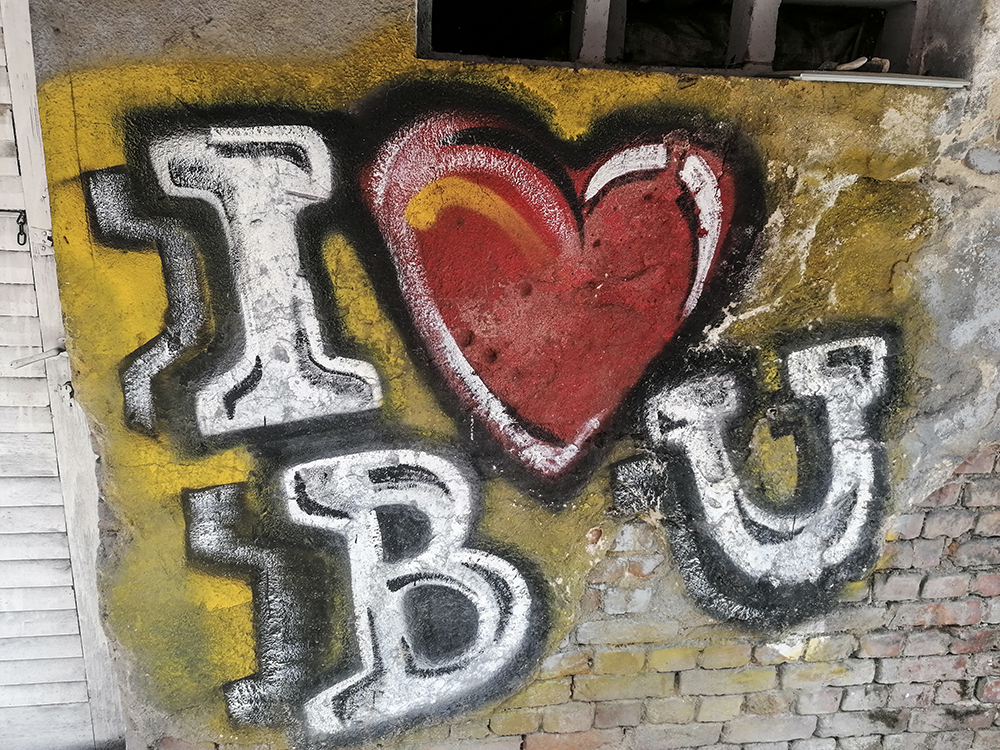
Young people in Bujanovac, and other municipalities in the valley, are trying to find a way to stay and survive. Photo: Dejan Kožul.
Albanian representatives in government have tried to make changes to the legal framework. One among them, Shaip Kamberi, president of the parliamentary group United Valley-SDA in the Serbian National Assembly, and the main representative for Albanians living in Serbia, decided to speak out this year about, as he says, necessary reform of the constitutional and legal framework, linking them to EU demands on judiciary reform.
Reactions from Belgrade were negative, and he soon found himself the target of pro-government media and President Aleksandar Vučić himself, who described Kamberi’s intervention as advocating for an “independent Kosovo” and secession of the Preševo Valley. “He also thinks that the best Serbia would be one without Preševo, Bujanovac, and Medveđa, a Serbia without Kosovo,” Vučić said, describing Kamberi.
Kamberi denied this on his personal Facebook page. He wrote that he has “no problem with Serbs,” but that he disagrees with Vučić’s policies, adding that he is devoted to a democratic Serbia.
Talking to K2.0, Kamberi said that his intention was to “shorten the procedures for changing the Constitution.”
“Giving and taking foreign territories is prohibited, and that's a fact.”
Ljiljana Stojanović, journalist
Kamberi and other Albanian political leaders from the valley expect the status of this part of Serbia to be linked to the final stages of dialogue between Kosovo and Serbia that has been ongoing since 2011 under the EU’s auspices.
Mustafa sees the resolving of the status of this part of Serbia as the “guarantee of lasting peace.” Still, he emphasizes that it’s clear to everyone that the two parties’ stances are diametrically opposed.
Ljiljana Stojanović, the editor of Jugpress.com, an agency founded by the NGO Center for Democracy and Development of Serbia’s South, is categorical in stating that a deal is necessary, but that there can be no question of exchanging territories, which is sometimes discussed in public.
“Giving and taking foreign territories is prohibited, and that’s a fact,” Stojanović stated, emphasizing the attitude that has recently also been maintained by representatives of the international community.
The deal everyone is hoping for
Between the agreements and negotiations, said Stojanović, no space has been given to the real interests or needs of people. She recalls the existence of the Coordination Body, but says that their activities aren’t visible on the ground.
“If somebody really wants those municipalities to be part of Serbia, then they must talk to people,” Stojanović pointed out. “That’s the first important step. That’s why the Coordination Body was established, but it’s as if it doesn’t exist because it is virtually invisible on the ground.”
She said that she feels that the current attitude of Belgrade is to “consciously push the valley under the jurisdiction of Prishtina.” As proof of this, she mentioned the lack of help provided to this region after the floods in summer 2020 and January 2021.
“If the capital city, where the Government of Serbia is situated, doesn’t show any interest, nor sends help to the flooded areas in Bujanovac, even though the flood took place last year, but help arrives from Kosovo and Albania in the meantime, what are you doing?” Stojanović asked.
For the help to be more tangible, they repeat, an agreement needs to be reached between Belgrade and Pristina.
Both Prishtina and Tirana have sent help to the valley, amounting to more than 100,000 euros. At the same time, Belgrade decided to allocate funds through the Coordination Body only to individual households ― 130 households applied and received funds ― in the maximum amount of 1,000 euros.
Nevertheless, Kamberi claims that Pristina is “shy” in offering help to this region, adding that it doesn’t suffice to act in “ad hoc situations,” referring to the floods. He is categorical in demanding that Albanians in this part of Serbia are requesting a program be established in Pristina for the benefit of the area.
For the help to be more tangible, they repeat, an agreement needs to be reached between Belgrade and Prishtina.
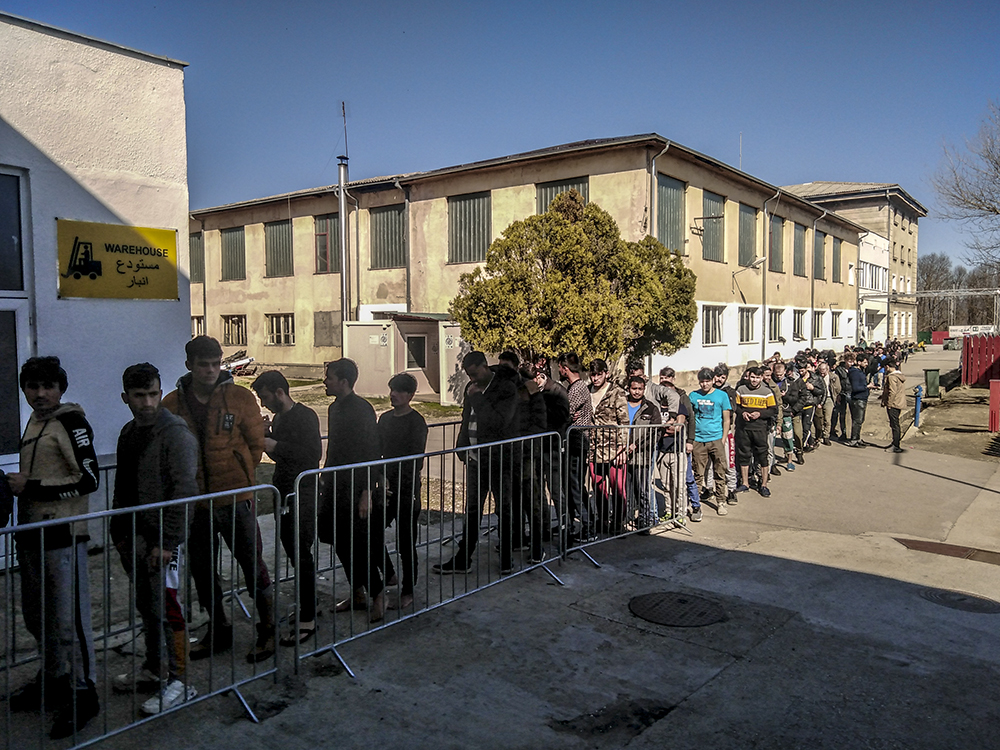
Since 2016, many locals in this forgotten part of Serbia can only find jobs in the migrant camps that the EU set up. Photo: Dejan Kožul.
“The new beginning of negotiations doesn’t seem promising, but people in southern Serbia aren’t losing hope,” Kamberi said, warning that there is little hope that a solution will be attained prior to the elections scheduled for next year.
The one thing everyone K2.0 spoke in the valley agrees on is that the population is hostage to relations between Serbia and Kosovo.
Ljiljana Stojanović notes that for the past few years, there has been no talk about different communities living together, even though they are bound by the same problems. Instead, Stojanović said that the public discourse is riddled with people’s fear of other people, “which leads to the notion that it isn’t very advisable to talk to people of a different nation or be seen with them.”
“People from both communities react identically, have the same problems ― how will they survive and how can their children remain in the place they were born,” she concluded.
Fences and camps
In this borderland ― which for many locals feels like a no-man’s land ― Belgrade-based authorities, with EU support, opened camps in 2016 for migrants crossing the Balkan route.
Besides camps, the Municipality of Preševo, rather, the village of Miratovac, on the border with North Macedonia, became the place where a fence was being erected, the goal of which was to stop immigrants from moving farther along this route.
The plan was to raise a fence along the entire border with North Macedonia, some 150 kilometers, but the implementation of the project isn’t going as smoothly as expected.
According to some media, the fence was erected with EU funds, although there is no official confirmation of such claims. The fence was built on land bought from locals.
In official government documents, it is stated that the goal of erecting the fence was to restrict the possible mass crossing of the border “for the sake of preventing the spread of the coronavirus.” To this day, the public in the region and the valley have little knowledge of this issue.
The plan was to raise a fence along the entire border with North Macedonia, some 150 kilometers, but the implementation of the project isn’t going as smoothly as expected. The fence is only visible in the area close to the border checkpoint.
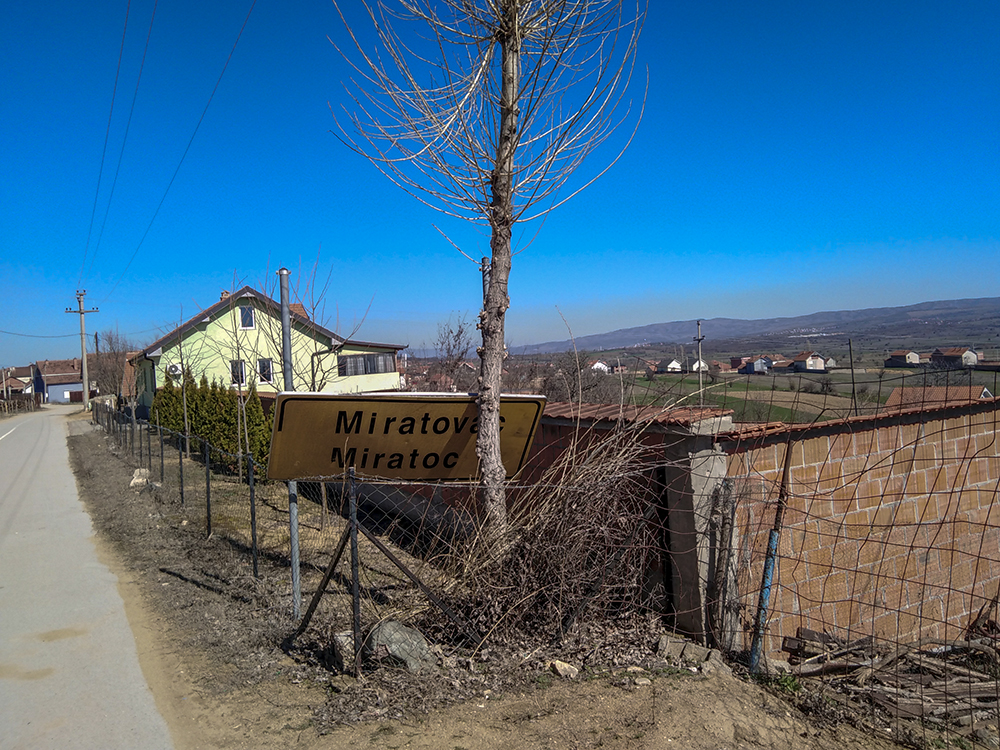
Hundreds of thousands of euros were invested in raising the fence near the border in Miratovac to stop migrants, hardly a dinar has gone to improving living conditions in the village. Photo: Dejan Kožul.
The camp in Preševo can accommodate around 1,000 people and is a closed-style camp, meaning people can go out only with the permission for a limited time during a day. It is situated in a former cigar factory that was renovated with international donor money. The camp is under the jurisdiction of the Commissariat for Refugees of Serbia and the infrastructure there secures jobs for a significant number of people from the area.
The same applies to a camp in Bujanovac, which has a capacity of around 200 people.
The Serbian authorities frequently send migrants found in other places in Serbia to the camp in Preševo, against their will. This includes people apprehended in Belgrade or close to the borders of Hungary and Croatia.
However, neither the local youth, nor the people residing in the two camps, have any intention of staying in the valley, nor in the region for that matter.
Feature image: Dejan Kožul





